SAP | HANA
SAP HANA is an in-memory, column-oriented, relational database management system developed and marketed by SAP. It is well-known for its fast data processing and advanced analytics capabilities. SAP HANA offers both transactional and analytical workloads and allows for real-time data processing.
SAP HANA in ADOC
Data reliability capabilities are provided by ADOC for data saved in your SAP HANA data source. You must either construct a new Data Plane or use an existing one to take advantage of this functionality. By adding SAP HANA as a data source in ADOC, you can monitor and assess the dependability and integrity of your data.
Steps to Add SAP HANA as a Data Source
To add SAP HANA as a Data source:
- Click the Register icon from the left pane.
- Click Add Data Source button.
- Select the SAP HANA data source. The Data Source Details page is displayed.
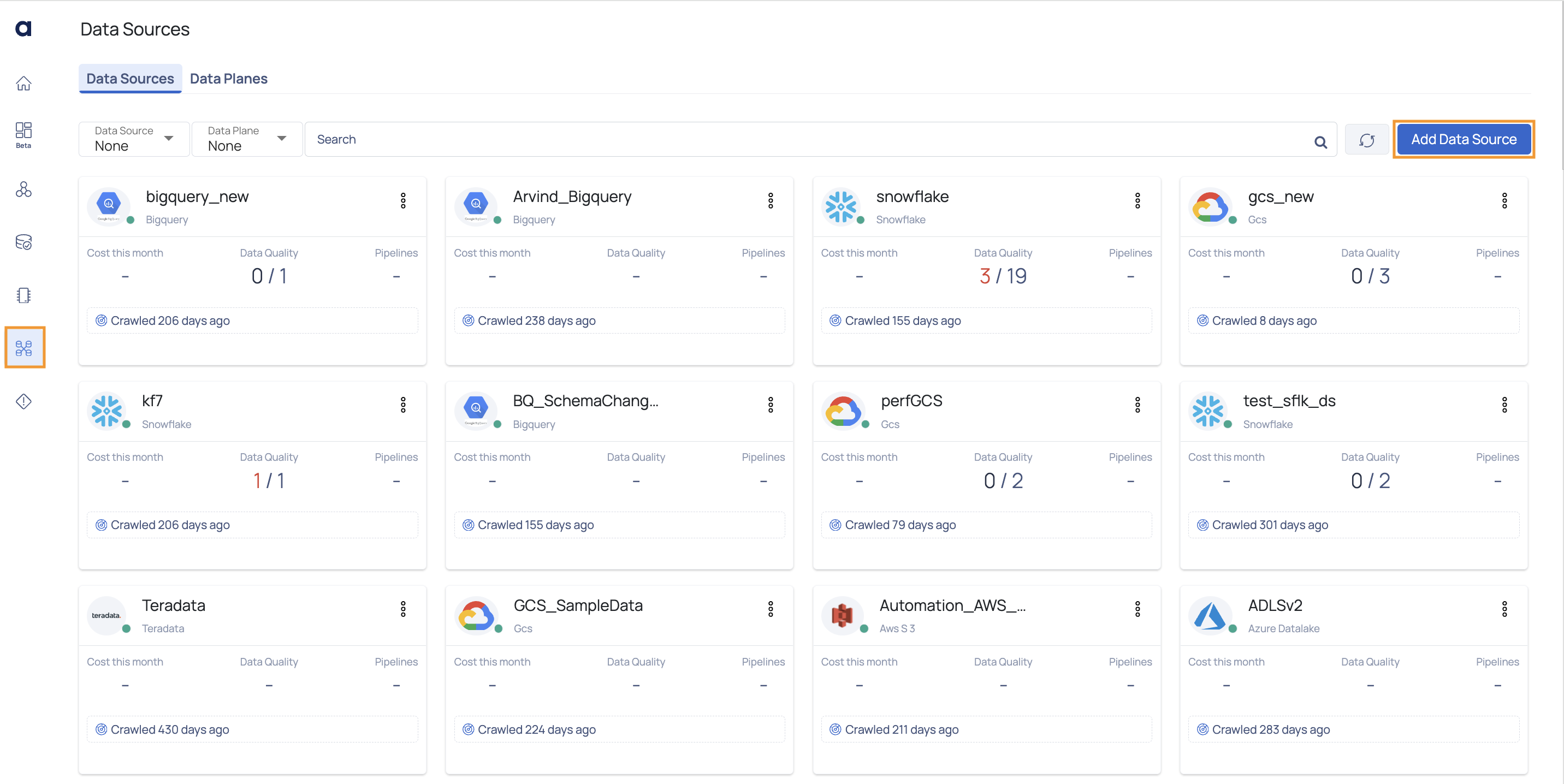
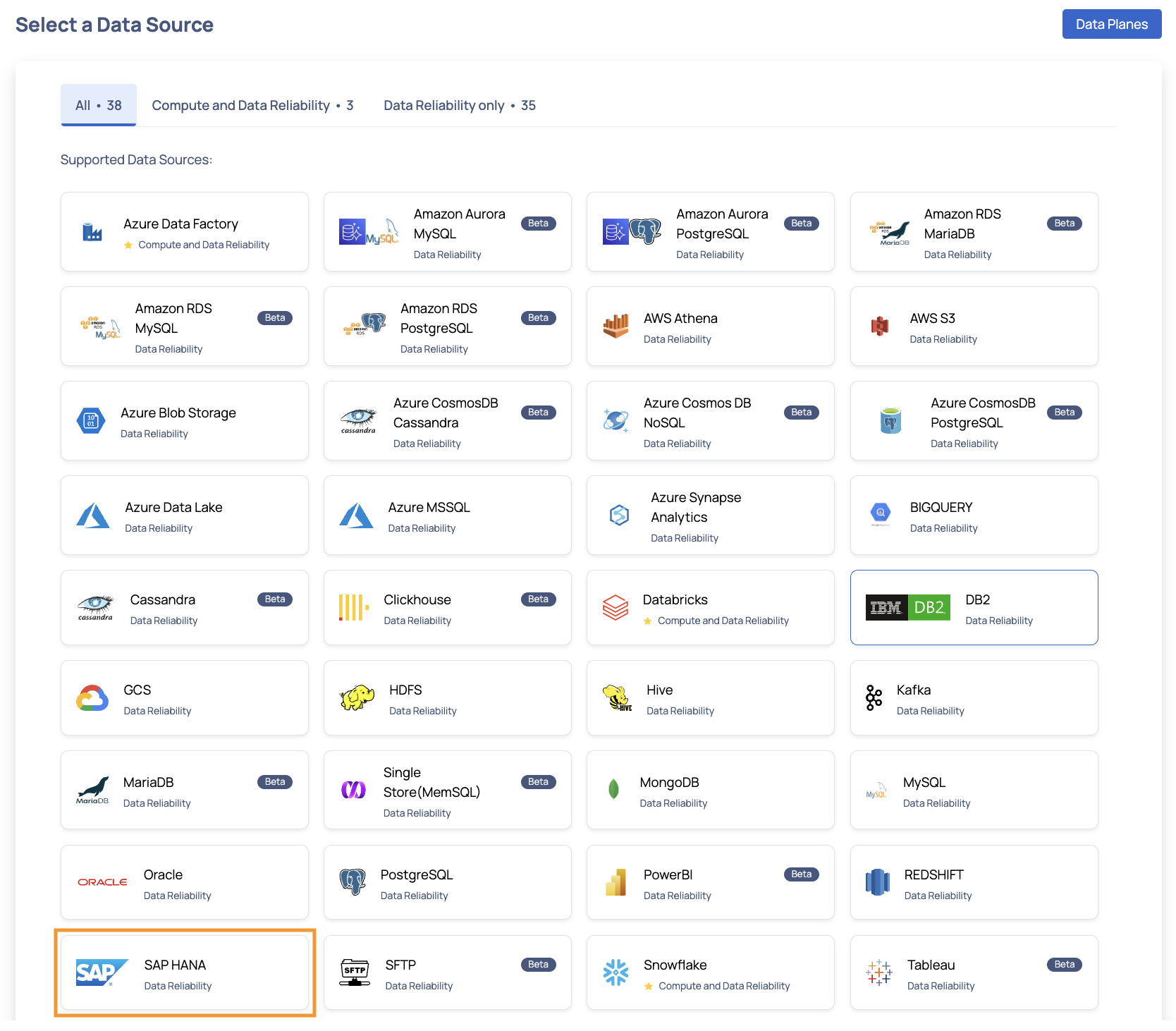
- Enter a name for the data source in the Data Source name field.
- (Optional) Enter a description for the Data Source in the Description field.
- Enable the Data Reliability capability by switching on the toggle switch.
- Select a Data Plane from the Select Data Plane drop-down menu. To create a new Data Plane, click Setup Dataplane.
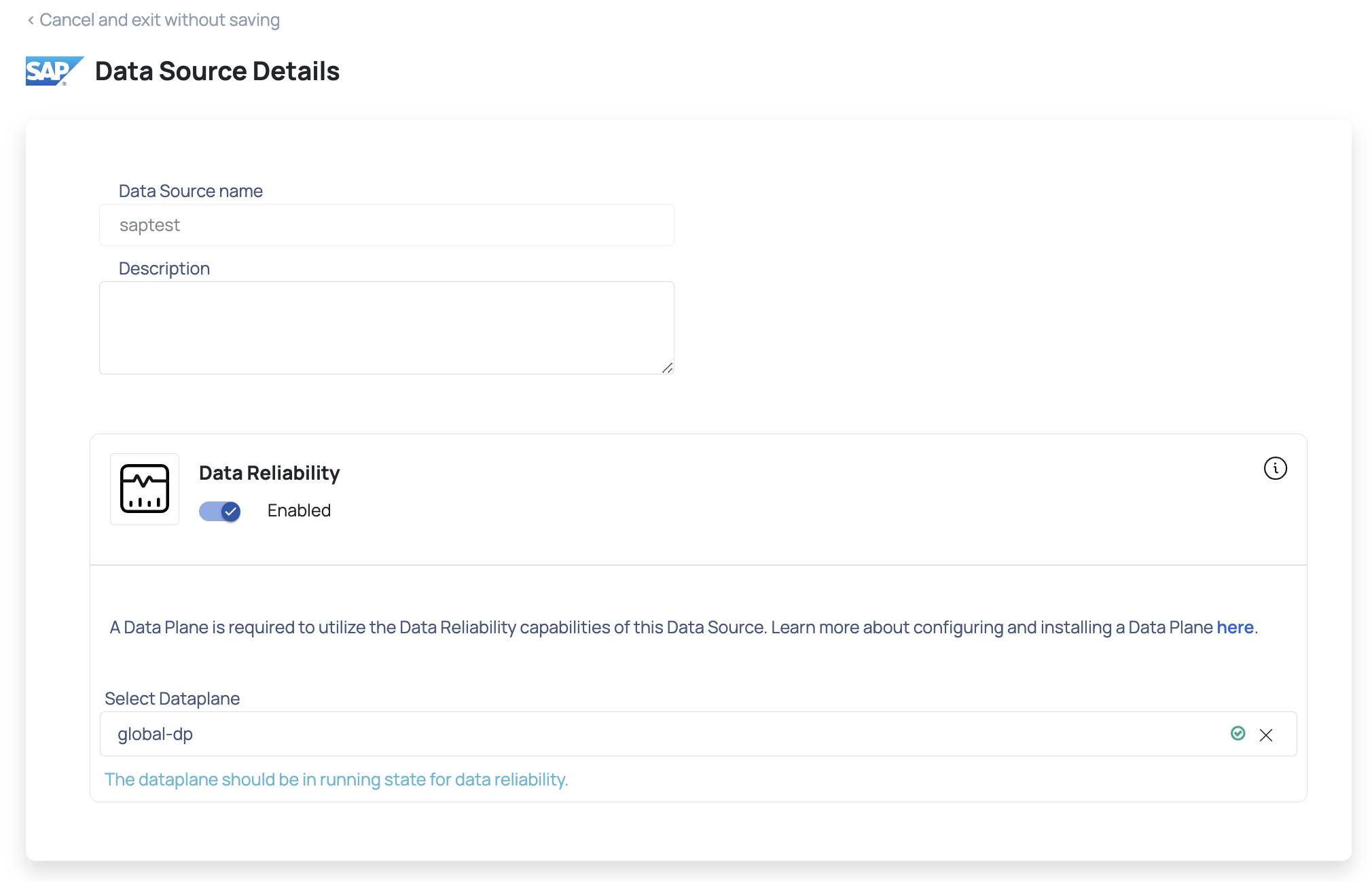
You must either create a Data Plane or use an existing Data Plane to enable the Data Reliability capability.
- Click Next. The Enter Connection Details page is displayed.
- Enter your JDBC URL in the URL field.
- Enter your username in the Username field.
- Enter your password in the Password field.
- Select the Dataplane Engine, either Spark or Pushdown Data Engine, for profiling and data quality.
- Click Test Connection. If your credentials are valid, you receive a Connected message. If you get an error message, validate the SAP credentials you entered.
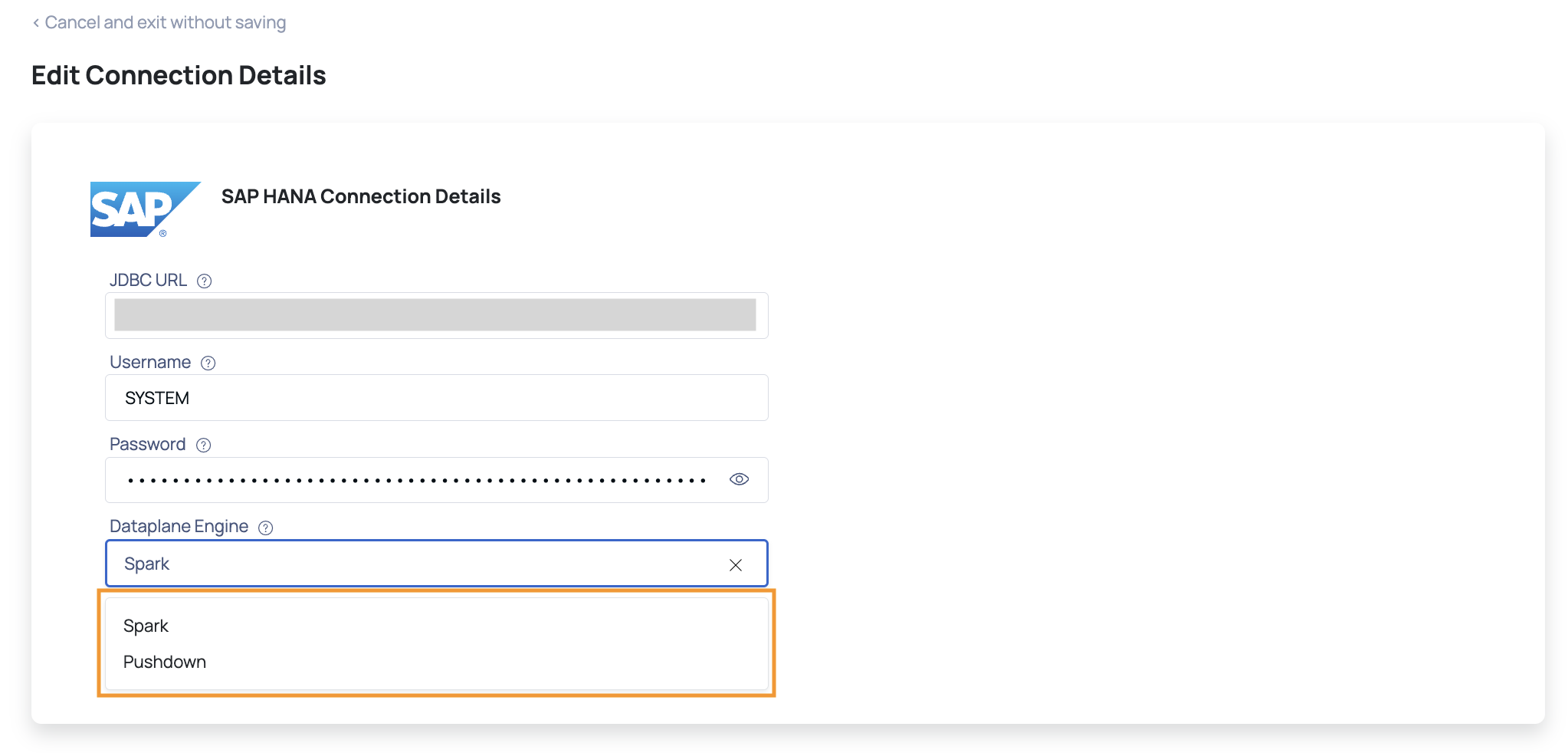
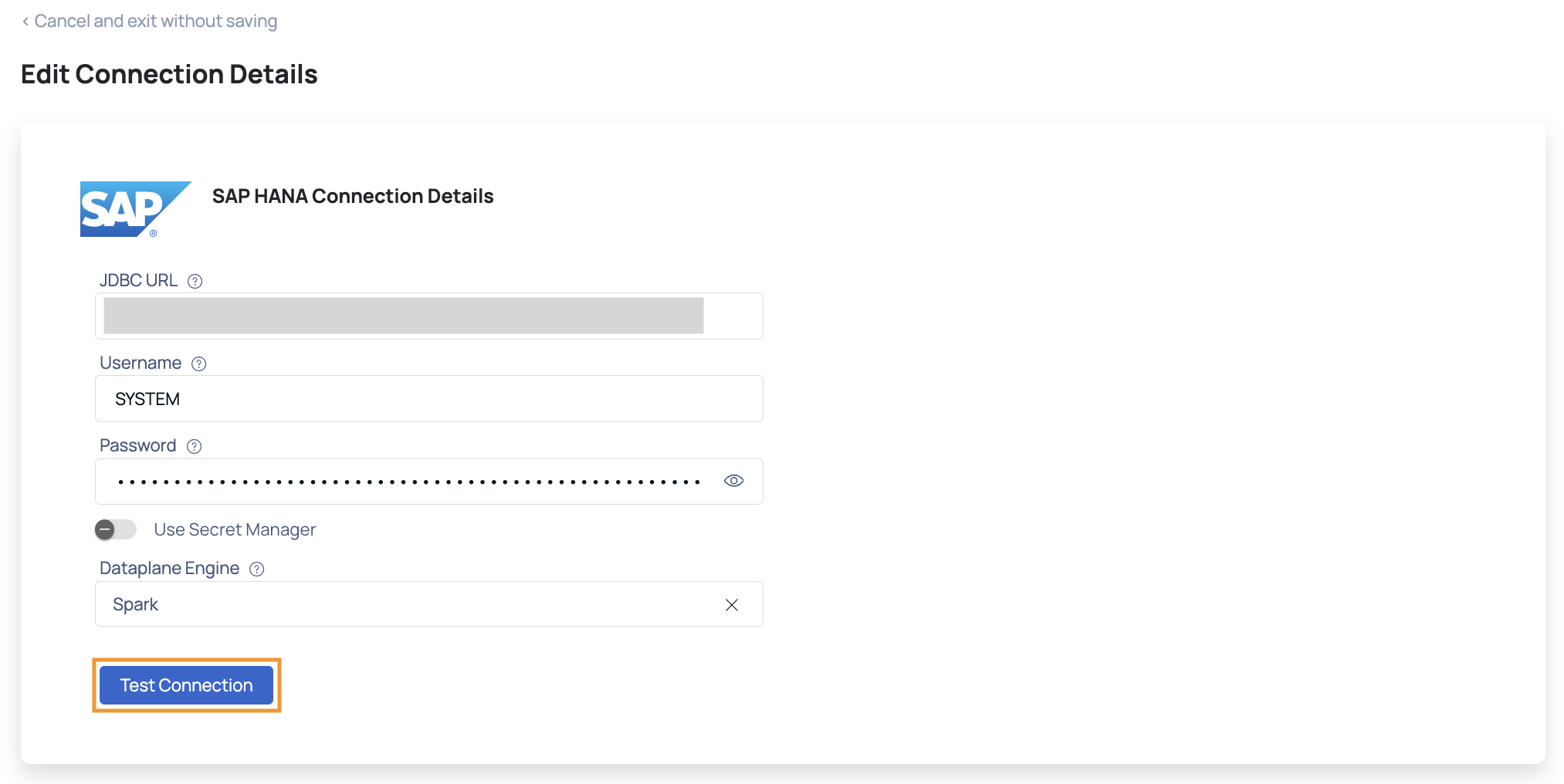
- Click Next. The Observability Setup page is displayed.
- Provide the Schema to be monitored by ADOC.
- Enable the Crawler Execution Schedule: Turn on this toggle switch to select a time tag and time zone to schedule the execution of crawlers for Data Reliability.
- Click Submit.
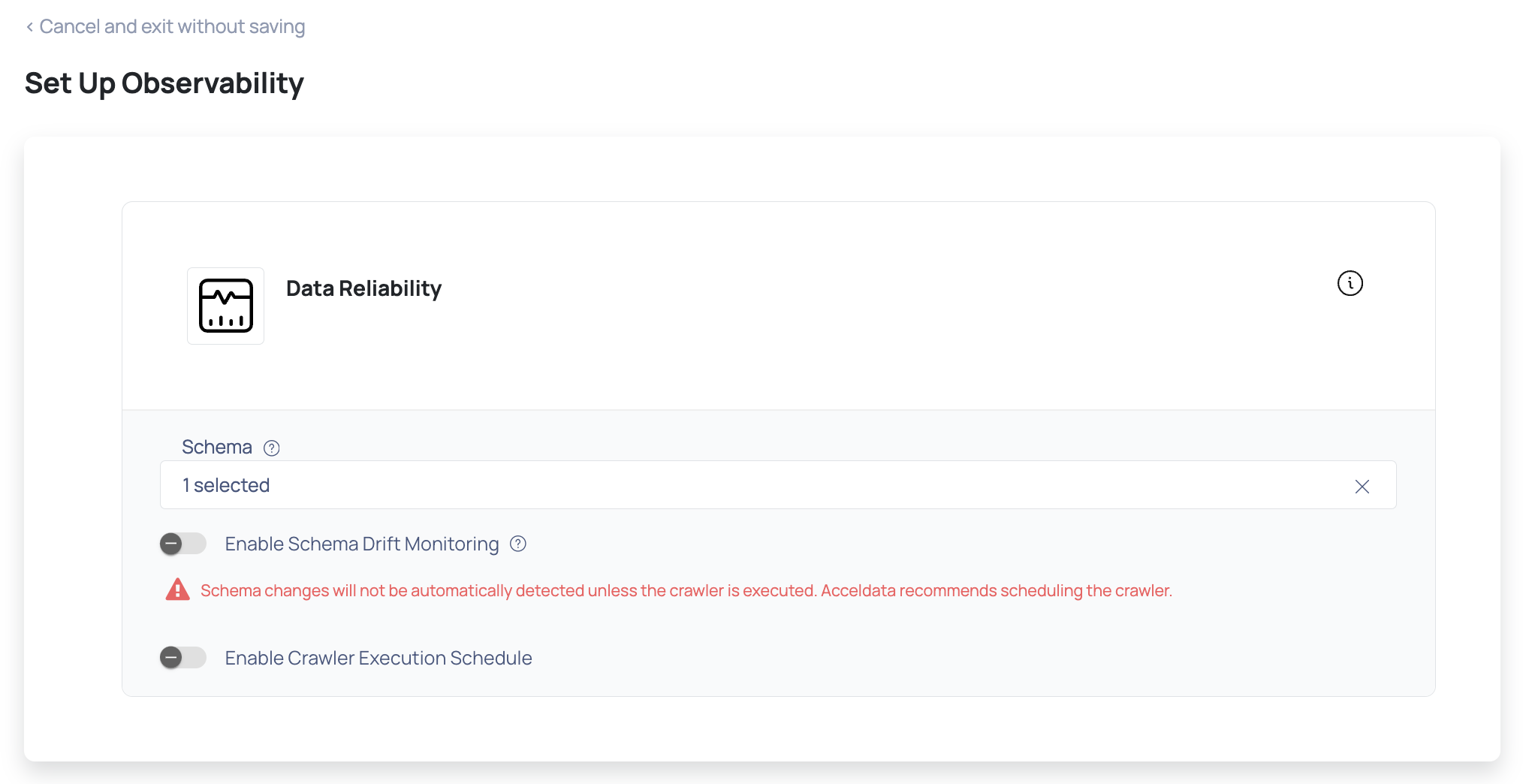
ADOC now includes SAP HANA as a Data Source. You can choose to begin crawling your SAP account immediately or later.
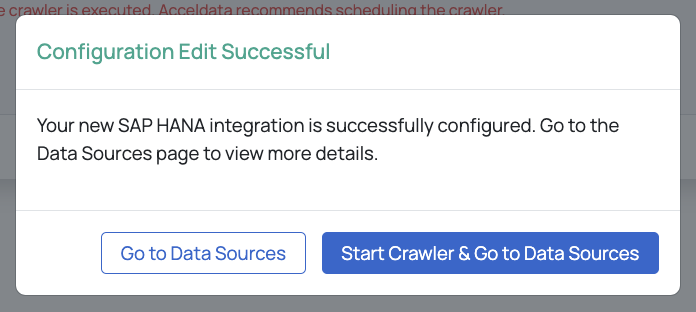
ADOC V3.10.0 onwards provides user the ability to connect to column views within SAP HANA environments. This allows users to easily access and visualize data in a structured way. Column views provide a way to organize and display data in a way that is intuitive and easy to understand. By enabling connectivity to column views, users can quickly gain insights and make informed decisions based on the data stored in their SAP HANA environment.
Control Plane Concurrent Connections and Queueing Mechanism
The ADOC Control Plane (CP) now supports a queueing mechanism for managing concurrent connections at the data source level. This feature is aimed at controlling and optimizing the execution of jobs, thereby preventing overload on customer databases and improving system performance and reliability. This guide provides an overview of how concurrent job execution is managed and queued, as well as details on the configuration process for manual and scheduled executions.
Key Features
- Concurrency Control at Datasource Level: Define the maximum number of concurrent jobs allowed for a specific data source.
- Queueing Mechanism for Jobs: Introduce a queueing mechanism to manage jobs that exceed the configured concurrency limit, ensuring smooth execution without overloading the database.
- Support for Multiple Job Types: Currently supports data quality, reconciliation, and profiling jobs.
- Flexibility in Slot Allocation: Users can set the number of available slots as per their performance needs.
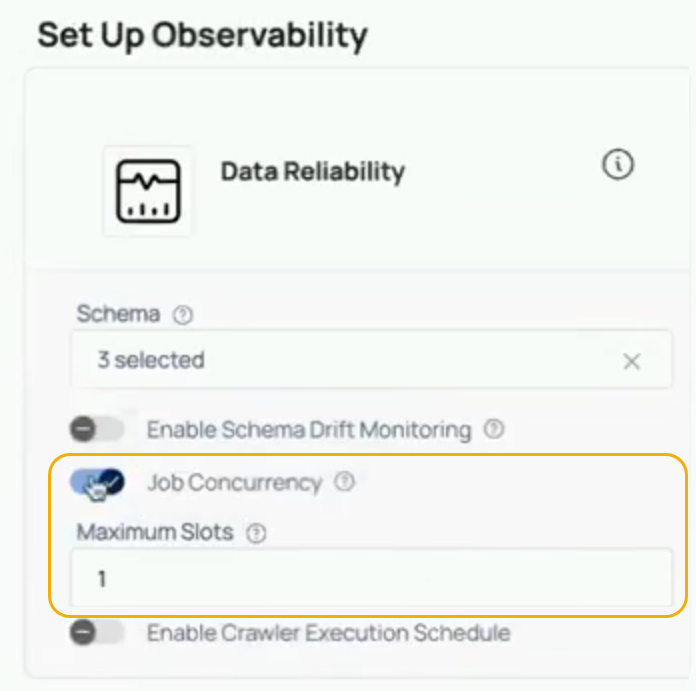
Concurrency Control and Queueing Mechanism
Why Concurrency Control is Needed?
Previously, no concurrency control existed to manage numerous jobs on the Control Plane. This meant that users may submit a huge number of jobs at once, potentially overflowing their database and causing performance issues or even system breakdowns. The new concurrency management technique ensures that only a fixed number of jobs can run concurrently, with additional jobs queued.
The concurrency control and queueing mechanism has been implemented for SAP Hana data sources. The new feature allows users to set the maximum number of concurrent jobs for a particular data source. If the number of jobs triggered exceeds the defined limit, the remaining jobs are queued until a slot becomes available.
How the Mechanism Works
- Job Slots: Users can define the number of slots available for concurrent job execution for a given data source. For example, if a data source is configured with a maximum of 5 concurrent jobs, only five jobs will run simultaneously.
- Queueing Mechanism: If more than five jobs are triggered, the excess jobs are moved to a queue and marked as "waiting." As soon as a running job completes, a slot is freed, and a job from the queue is picked for execution.
- Slot Monitoring: A background service continuously monitors the availability of job slots, checking every minute to see if a queued job can be started.
Configuration
Setting Concurrent Job Limits
When configuring a new data source or editing an existing one, users have the option to enable job concurrency control. By default, this setting is disabled, but it can be enabled, and users can set the Maximum Slots to define how many jobs can run concurrently.
Steps to Configure Job Concurrency:
- Navigate to the data source configuration page.
- Enable Job Concurrency Control by toggling the setting.
- Enter the number of slots (e.g., 1, 5, 10) that should be available for concurrent job execution.
- Save the configuration.
- Slot Setting: Suppose a user sets the Maximum Slots to 1 for a particular data source.
- Job Submission: The user then triggers three profiling jobs simultaneously.
- Queueing: Only one job will start immediately. The remaining two jobs are queued, and their status is shown as waiting.
- Slot Release: Once the first job completes, a slot is released, and the next job in the queue is started.
Benefits
- Prevents Overload: By limiting the number of concurrent jobs, the feature helps prevent overloading of customer databases, thus maintaining performance and avoiding potential crashes.
- Flexible Configuration: Users can adjust the number of concurrent slots based on their performance needs, giving them control over the workload being processed.
- Scalable: While this feature is currently implemented for SAP Hana data sources, it can be extended to other data sources such as Snowflake with minimal changes.
The queueing method for concurrent connections at the data source level is critical for maintaining system stability and optimal performance when dealing with multiple task executions. By restricting the amount of concurrent jobs and implementing a queueing system, the Control Plane may effectively manage workloads without overflowing the database.